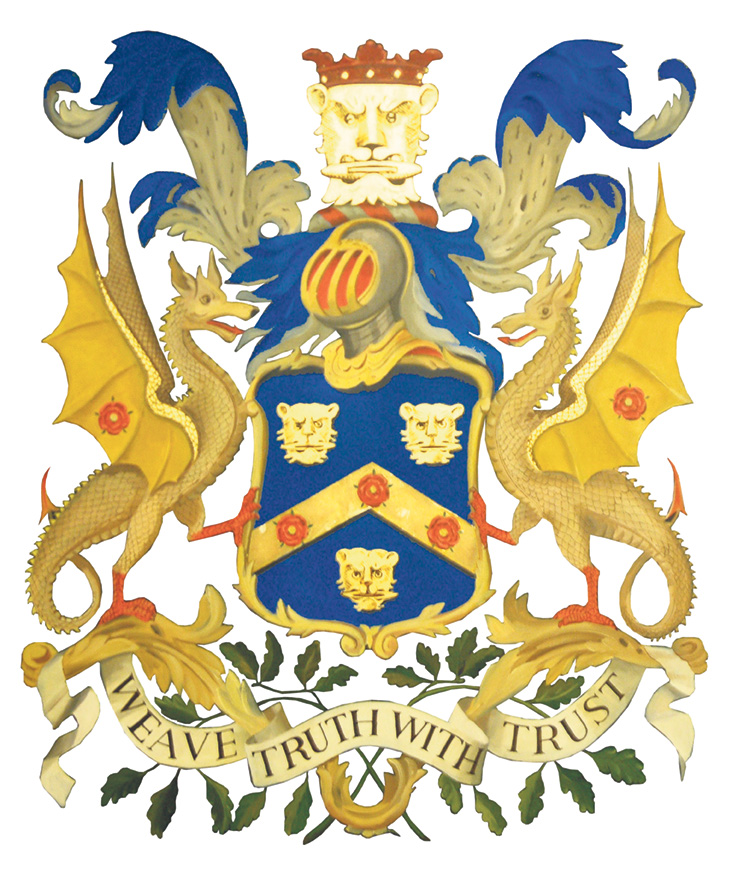1415 BATTLE OF AGINCOURT
1446 WEAVERS’ LETTERS OF PATENT, HENRY VI
1490 WEAVERS’ GRANT OF ARMS & CREST
1497 AMALGAMATION OF FLEMISH WEAVERS INTO COMPANY

1415 BATTLE OF AGINCOURT
1446 WEAVERS’ LETTERS OF PATENT, HENRY VI
1490 WEAVERS’ GRANT OF ARMS & CREST
1497 AMALGAMATION OF FLEMISH WEAVERS INTO COMPANY
The Weavers’ guild did much to ensure high standards for all in the weaving trade, with the original ordinances stressing that the guild was for all “men and women”. As early as 1381, there are guild references to women weaving and trading on their own account, with women who ran their own business being referred to as ‘femme sole’.
In the early years of the fourteenth century the Weavers’ Guild submitted to the authority of the Mayor. In time it lost its pre‑eminence as other textile guilds developed, many of them powerful merchant companies like the Mercers, Drapers, Merchant Taylors, Haberdashers and Clothworkers.
Company Organisation in the Middle Ages
Since 1300 it had been laid down that there should be four rulers of the craft: two Bailiffs and two Wardens. The governing officials were called Bailiffs, hence the Weavers’ Company’s distinction of being the only Company headed by an Upper Bailiff rather than by a Master or Prime Warden. The Bailiffs looked after finance, receiving fines and fees for admission to the Freedom. They dealt with the enrolment of apprentices, who served for seven years, and the admission of journeymen. These according to late sixteenth-century ordinances must serve at least one year, be worth ten pounds and submit a masterpiece as proof of their work before admission to the status of master. The Bailiffs also controlled the arrangements for inspection and search, and regulations on standards and hours of work. The Wardens were concerned with the fraternal work of the guild, with charitable works and attendance at feasts and quarterly meetings. The Court of Assistants developed from a council of former office holders and was well established by the early sixteenth century.
In the fifteenth century the greater guilds began to apply for charters of incorporation and so were officially recognised as Companies. The senior members of these Companies were clothed in their own livery and the Companies became known as Livery Companies. The Weavers’ Guild relied on its ancient charters. In 1490 it obtained a Grant of Arms. In the early sixteenth century it claimed the status of an incorporated craft and in 1577 obtained from the City authorities ratification of its Ordinances.

Copyright © 2025 The Weavers' Company. All Rights Reserved.